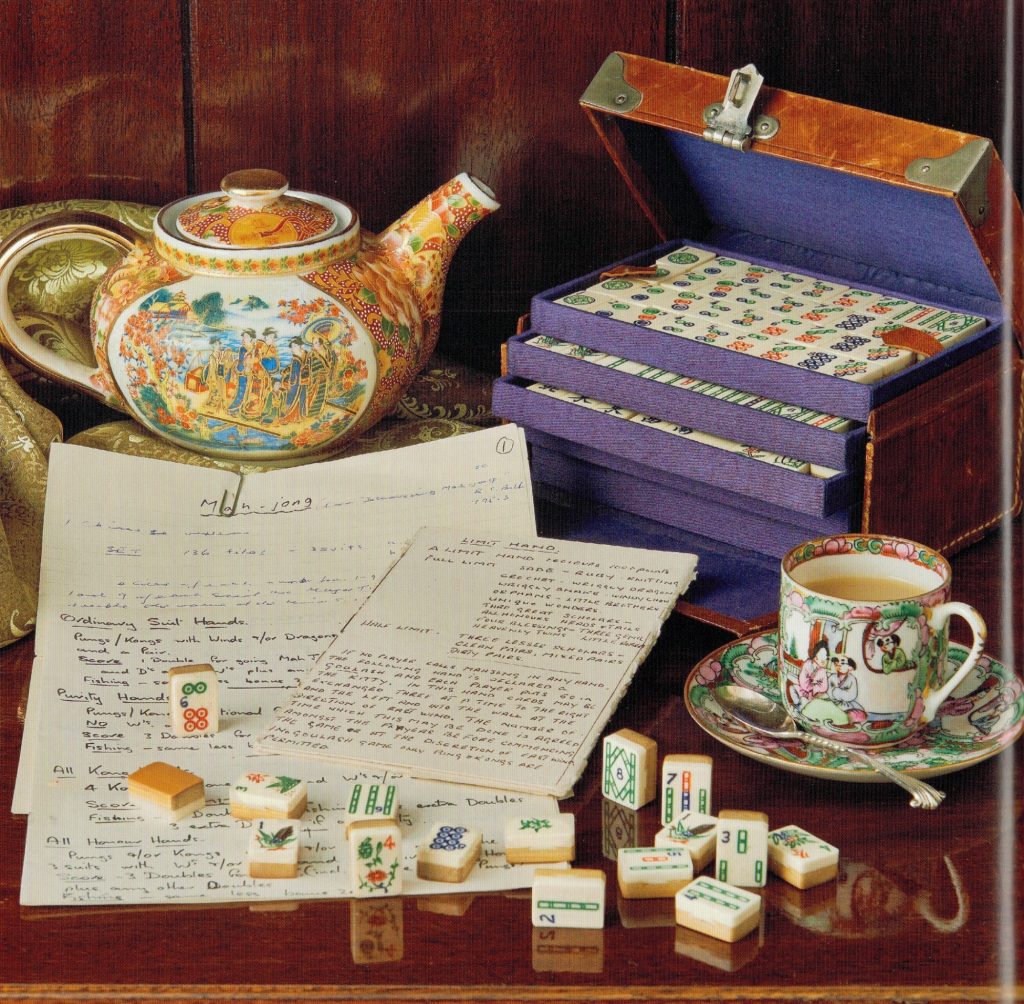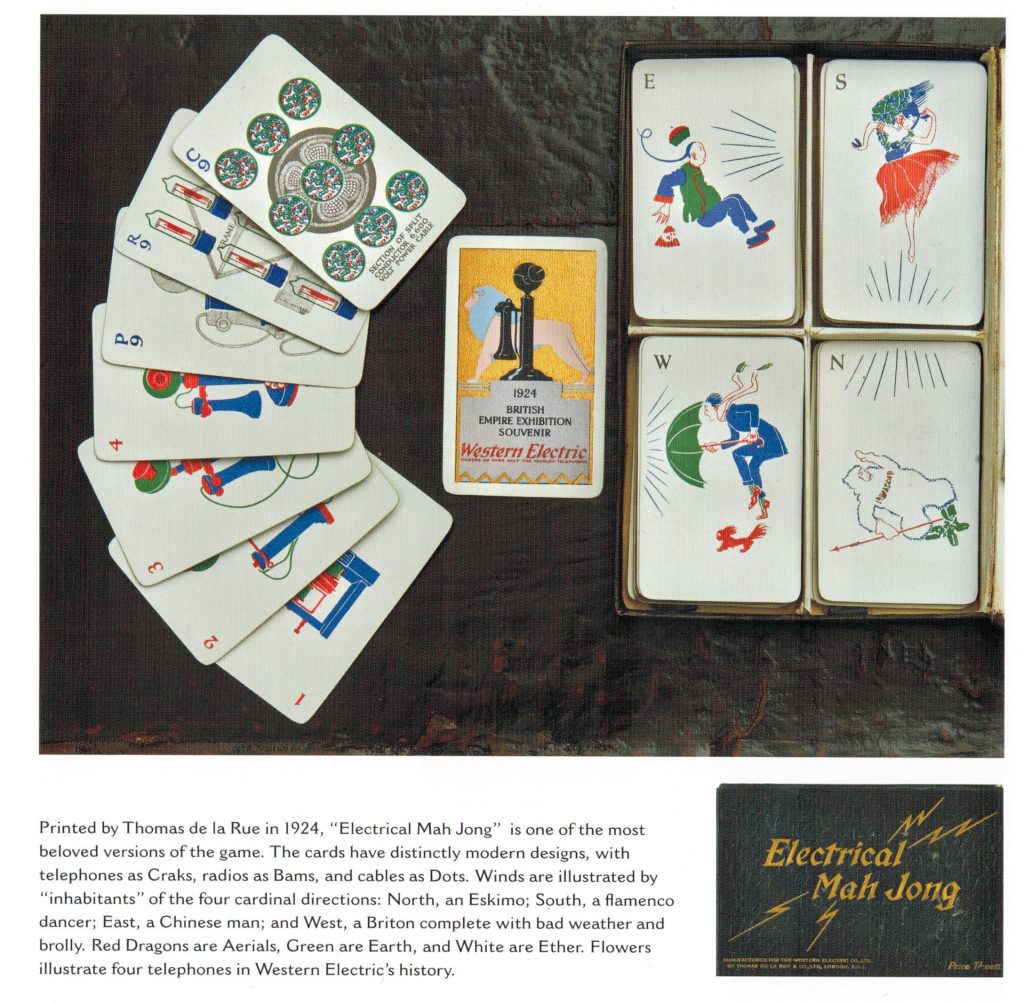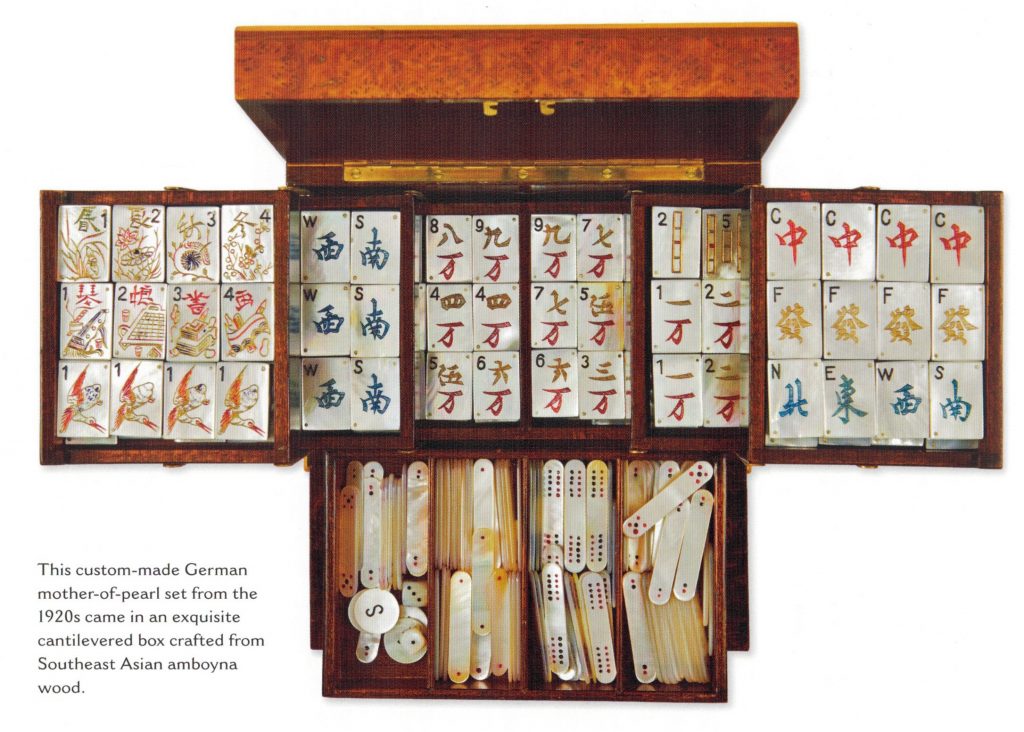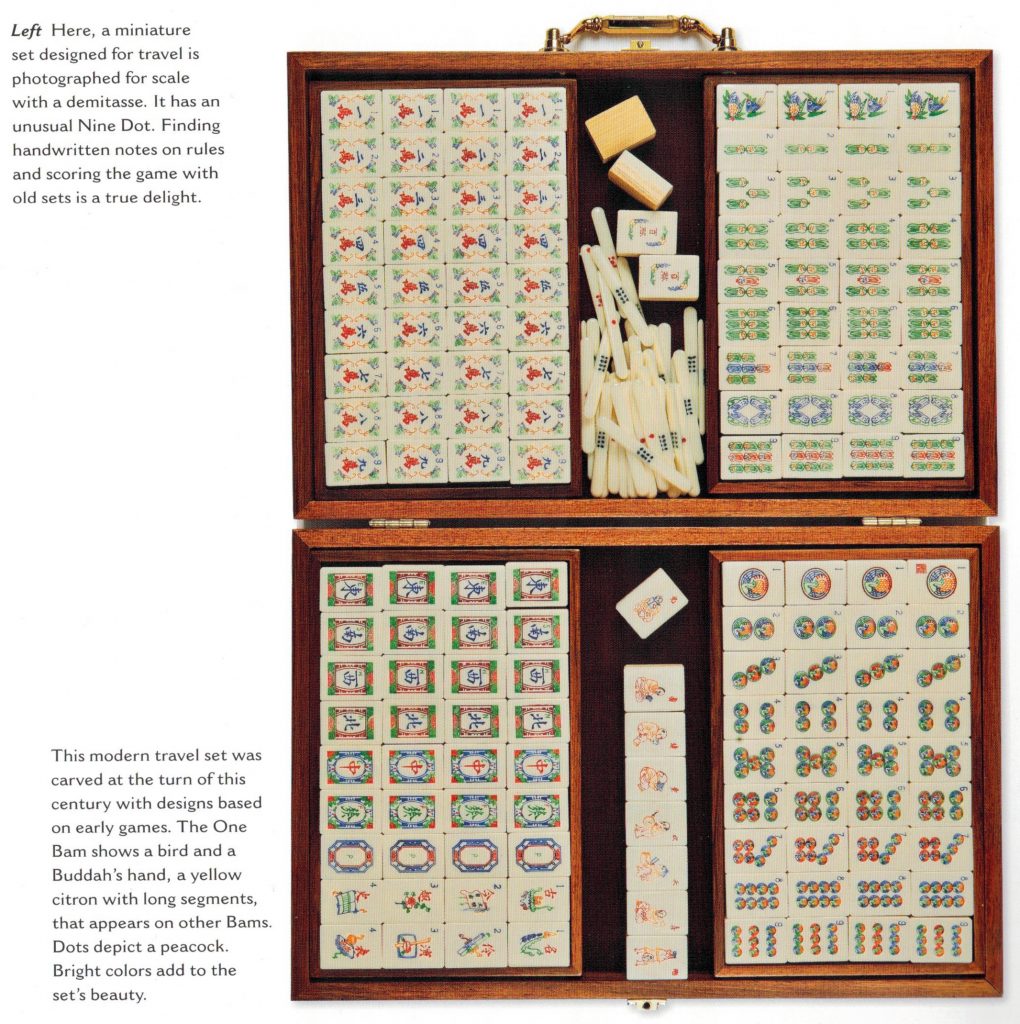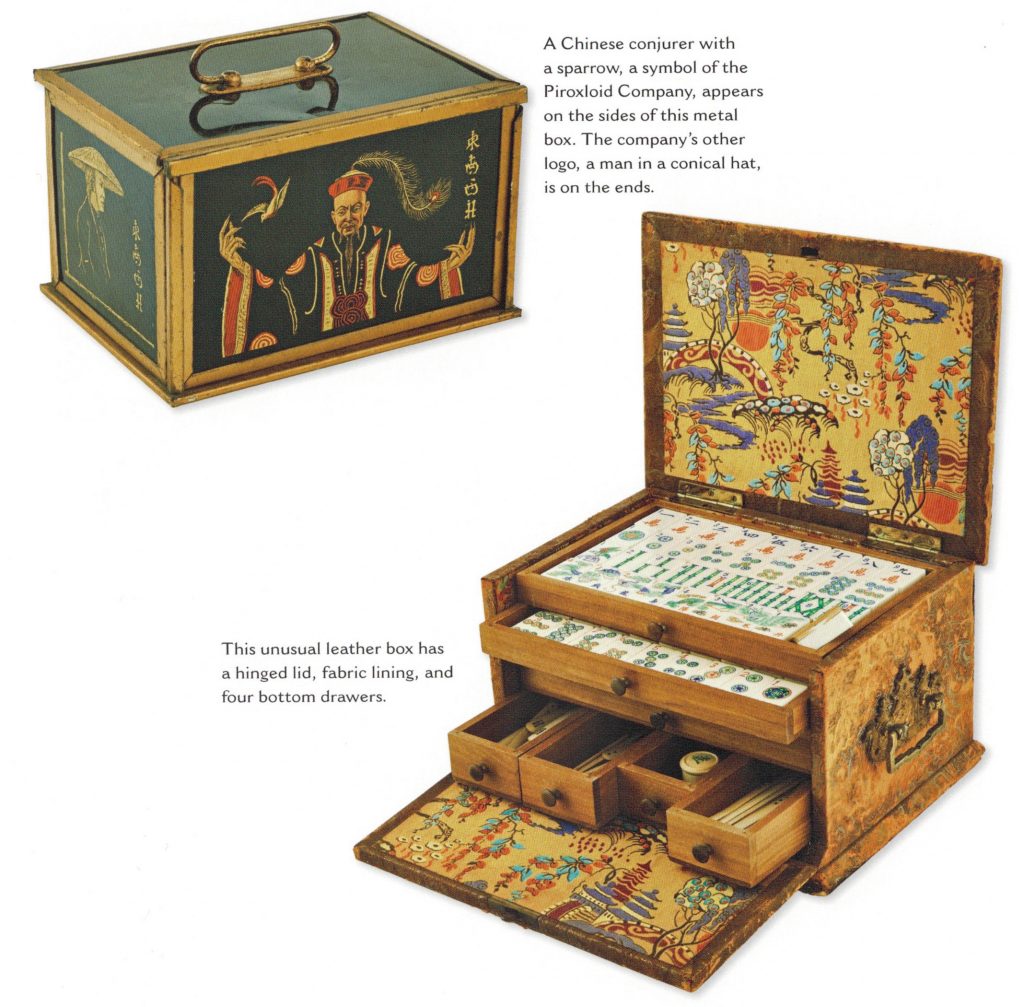Mah Jongg: The Art of the Game
Last year, we talked about the happy game of mahjong, focusing on how I got into the game and recommending a few resources for others wanting to get started. Today, though, let’s look at the art of the game, that is, the art of the tiles themselves. When people first encounter mahjong, the tiles are, naturally, the first thing they notice and as with Western playing cards there have been many lovely designs over the years by many artists. So, let’s check out the book Mah Jongg: The Art of the Game, by Ann M. Israel and Gregg Swain, with photography by Michael Arnaud.
Israel and Swain begin with some brief introductory material and a history of mahjong (though they use the American-style spelling “mah jongg”). These are simply to orient the reader and are an appetiser to the main course, but they deserve credit for not promoting the old marketing hype about the ancient origins of mahjong; as they point out, its origins lie in the mid-19th Century. Most of the rest of the book is divided by tile material, paper, bamboo and wood, bakelite and catalin, pyralin and French ivory, Chinese bakelite, common metals, bone and bamboo, and precious materials. It ends with box art and a chapter on miscellany such as ephemera and photos of people playing mahjong.
The unusual materials aren’t mere novelties. For example, I typically associate paper (essentially playing cards instead of tiles) as a low-cost, convenient way to get a set if you’re on a budget or just don’t want to haul a rather hefty box of tiles and supplies around. There is some history to paper sets, since mahjong originated from a card game (and as the authors point out, fundamentally is a card game), but there has also been some noteworthy designs with the medium as well. The “Electrical Mah Jong” set from 1924 is one of the highlights of the whole book.
On the other end of the pricing spectrum are sets made of precious materials. Here the designs needn’t be particularly novel, but a tasteful aesthetic with fine craftsmanship on such media as ivory, ebony, and mother-of-pearl are sufficient to make for a striking set. My personal favourite is a German mother-of-pearl set from the 1920s.
Of course, historically common materials such as bakelite or bone and bamboo are well-represented in this book, and will be the materials that collectors most often encounter. The interest of these designs tend to stand out for either novelty, such as portraying elaborate scenes on the flower tiles, or for their exquisite craftsmanship. I tend to find the latter more interesting, as with this modern travel set.
When I’ve looked at collectible mahjong sets, I’ve often been particularly struck by the design of the box. Though the craftsmanship of the tiles is often impressive, they still need to stick to recognised basic designs for each tile. As a result, there can be more room for creativity on the box. Most sets come in rather utilitarian containers that are easy to carry around and simply do their job, but while they may not be ugly and I do appreciate the simple but nice boxes Yellow Mountain Imports, for instance, uses, I would love to have an elaborate, well-crafted box for future sets. Some boxes are finely carved, others painted, and this book features many beautiful examples of both. If I could pick one, I’d probably go with this Piroxloid Company’s painted box.
I should add, on a final note, that Tuttle did a fine job with the physical book. It’s well-bound with high quality paper in hardback. It’s absolutely worth getting if you’re a mahjong enthusiast, both for the informative content and the admirable photos.
